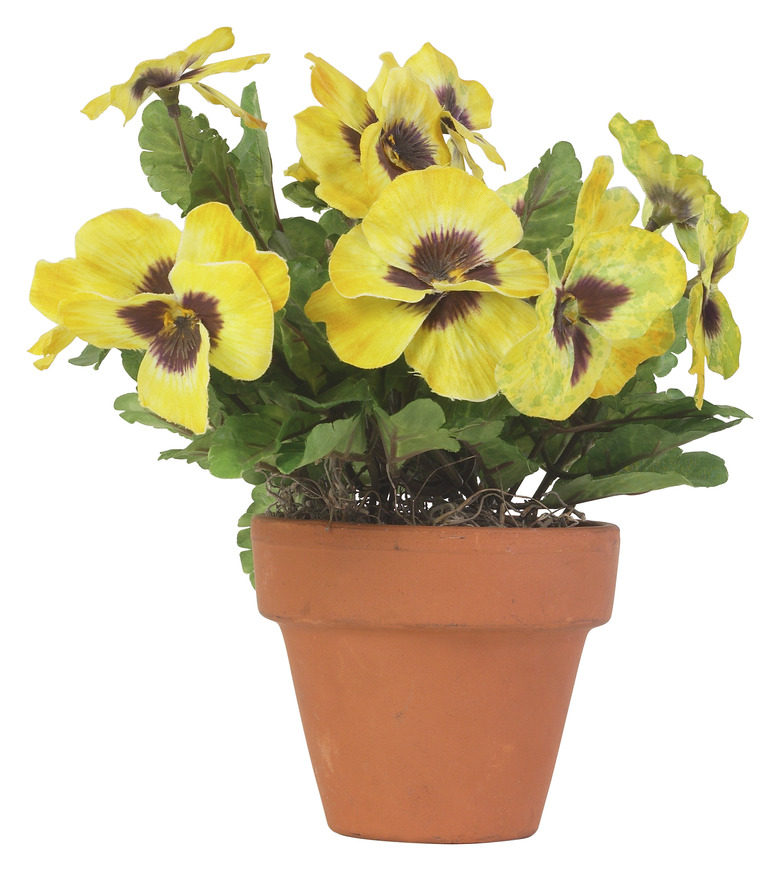Terra Cotta Pots With White Mold On Houseplants
Keeping houseplants healthy requires more than placing them in a sunny window and giving them a shot of water once a week. Inspecting both the soil and the stems of the plant regularly gives you a heads up to potential problems long before symptoms appear in the foliage or blooms. The presence of white mold is your cue to correct the problem before it is too late.
Humidity
Humidity
White mold or powdery mildew originates from fungi surviving in dead plant material, but thrives in humid conditions. The combination of a terra cotta pot that absorbs moisture and high levels of humidity in the growing area creates the prime conditions for this fungus to thrive. Removing dead foliage and lowering the humidity is vital to stopping the spread of white mold.
Pebble Trays
Pebble Trays
Terra cotta pots are porous and absorb water easily. When placed on pebble trays filled with water, use care to keep the water level below the bottom of the pot. Although keeping water below the pot is always a good practice, terra cotta pots pose the added risk of wicking water away from the pebble tray and keeping the soil wet and soggy.
Drainage
Drainage
Poor drainage prevents soil from drying and may keep the bottom of the pot soggy. This keeps the terra cotta pot moist, making your plant susceptible to mold and mildew. If the problem continues, checking for proper drainage is in order.
Overwatering
Overwatering
Many homeowners err by overwatering houseplants. Most plants prefer soil that dries between watering. Providing more water than your plant uses keeps soil wet and creates a breeding ground for disease, including white mold. Terra cotta pots may compound the problem by retaining excess water, as well.
Remedies
Remedies
Preventing white mold or powdery mildew on houseplants requires reducing the humidity level near your plants, improving air circulation and allowing the soil to dry slightly before watering. For severely affected plants, repotting them in fresh soil and checking that the pot has adequate drainage may be in order. If you intend to use the same pots, soak them in a mixture of one part bleach to nine parts water for up to 24 hours, and scrub them with a wire brush to remove residue.
